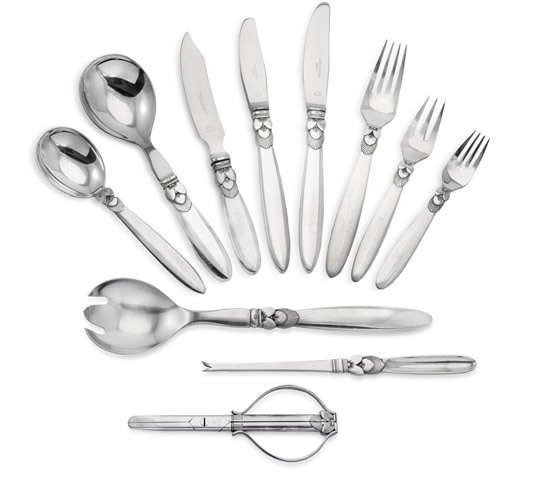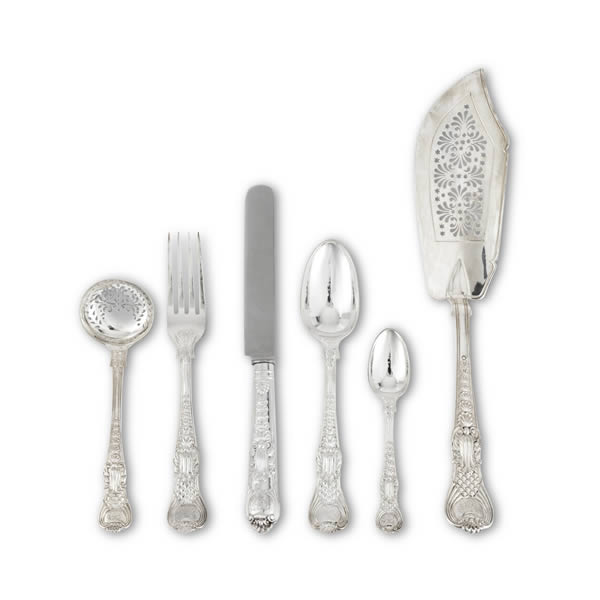Silver Serving Utensil Restoration in London
Reviving Elegance for Every Meal
Silver serving utensils, including spoons, forks, ladles, and tongs, are not just practical tools but are also prized for their beauty and craftsmanship. These utensils often serve as the centerpiece of a dining experience, adding a touch of sophistication to any table. Over time, however, silver serving utensils can accumulate tarnish, scratches, and wear, diminishing their beauty and functionality. Restoration ensures these elegant pieces remain both functional and visually striking, enhancing every meal and gathering.


Why Invest in Silver Serving Utensil Restoration?
Restoring silver serving utensils is an investment in both their beauty and functionality. Whether they are part of a fine dining set or a cherished family heirloom, properly restored utensils continue to add elegance to your meals while preserving their practical utility. Restoration ensures that these timeless pieces remain valuable and can be enjoyed for generations to come.
Silver serving utensils, restored to their former glory, embody both craftsmanship and practicality. Through restoration, you not only preserve their aesthetic charm but also their value—making them worthy of display and use for years to come.
When to Seek Professional Restoration
While cleaning and basic maintenance can be done at home, more serious issues, such as deep tarnish, significant damage, or replating needs, should be addressed by a professional:
- Severe Tarnish or Discoloration: If tarnish persists or if the silver has become discolored, professional restoration ensures thorough cleaning and polishing without causing further damage.
- Deep Scratches or Dents: Professional repair may be necessary for utensils with deep scratches, dents, or other significant surface damage.
- Replating: Silver-plated utensils with worn-out plating can be restored by experts through electroplating, ensuring a uniform and durable silver coating.
- Blade or Handle Repairs: In utensils with movable parts (such as serving tongs), loose or damaged joints may require professional adjustment or repair to restore functionality.
Common Issues with Silver Serving Utensils
Silver serving utensils can face various issues as they age or are used frequently:
- Tarnishing: Exposure to air and moisture causes silver to tarnish, which can result in a dull or brownish appearance.
- Scratches: Frequent use or improper storage can cause scratches on the surface of silver serving utensils, affecting both their aesthetic and function.
- Plating Wear: Silver-plated serving utensils may lose their silver coating, revealing the base metal underneath.
- Dents and Dings: Accidental impacts or rough handling can cause dents and dings in the utensil, damaging the surface.
- Discoloration: Harsh cleaning products, food acids, or humidity can cause discoloration, especially on detailed engravings or patterns.
- Loose Joints or Handles: In utensils with articulated parts, such as serving tongs or ladles, the joints or handles may become loose over time, affecting functionality.
Why is Silver Serving Utensil Restoration Important?
Restoring silver serving utensils serves several purposes that extend beyond aesthetics:
- Aesthetic Value: Restoration brings back the gleaming finish and shine of silver serving utensils, elevating the presentation of any meal.
- Functionality: Proper restoration ensures the utensils continue to function as they were originally intended, whether for serving soup, salad, or dessert.
- Preservation: Timely restoration prevents further damage from tarnish or wear, ensuring the longevity of your utensils.
- Sentimental or Collectible Value: Silver serving utensils often hold sentimental or collectible value, particularly those passed down through generations. Restoration helps preserve their historical and personal significance.
The Process of Restoring Silver Serving Utensils
Restoring silver serving utensils requires careful attention to detail to maintain both their appearance and function:
- Inspection and Assessment
The restoration process begins with a thorough inspection of the utensils. This includes evaluating the extent of tarnish, scratches, dents, and wear. Any loose joints or handles are also assessed to determine if repairs are needed. - Cleaning the Surface
The utensils are carefully cleaned to remove dirt, grime, and tarnish. Mild soap and warm water are typically used with a soft cloth or brush. For more detailed utensils, such as those with engravings or intricate patterns, extra care is taken to ensure that no damage occurs during the cleaning process. - Tarnish Removal
A silver polish or tarnish remover is applied to restore the utensils' shine. For silver-plated pieces, a gentler polish may be used to avoid damaging the thin silver layer. In the case of detailed engravings or patterns, care is taken to avoid disturbing these fine details. - Repairing Scratches, Dents, and Dings
Minor surface scratches can be buffed out, and any dents or dings are gently worked out of the metal to restore the utensil’s smooth surface. This is particularly important for silver serving utensils that may have intricate designs that need to remain intact. - Replating (If Necessary)
If the utensils are silver-plated and the plating has worn away, they can be replated through electroplating. This ensures the utensils look as good as new and maintains their protective silver layer. - Polishing and Finishing
After all repairs, the utensils are polished to a brilliant finish. Special attention is given to preserve any detailed engravings or designs, ensuring they remain crisp and visible. A protective coating may be applied to prevent tarnishing in the future.
Maintaining Restored Silver Serving Utensils
After your silver serving utensils have been restored, ongoing maintenance is essential to keep them looking their best:
- Regular Cleaning: Clean the utensils after each use with a soft, non-abrasive cloth to prevent tarnish and remove food residue.
- Avoid Harsh Cleaners: Do not use abrasive cleaners that could scratch the silver surface or cause discoloration.
- Proper Storage: Store silver serving utensils in a dry, tarnish-resistant cloth or case to minimize exposure to air and moisture, which can speed up tarnishing.
- Handle with Care: Handle utensils with clean hands and avoid dropping them. This helps prevent scratches, dents, and damage to the silver surface.
Silver Repairs, Restoration & Silver Plating by post
Send us your silver for restoration, repairs or silver plating with ease! Simply click the button below to download our "Send by Post" Repair Form. Complete the form and mail your silver item to us. Once repaired, your item will be returned to you securely via Special Delivery.
Let us handle your silver with the care it deserves, no matter where you are!

